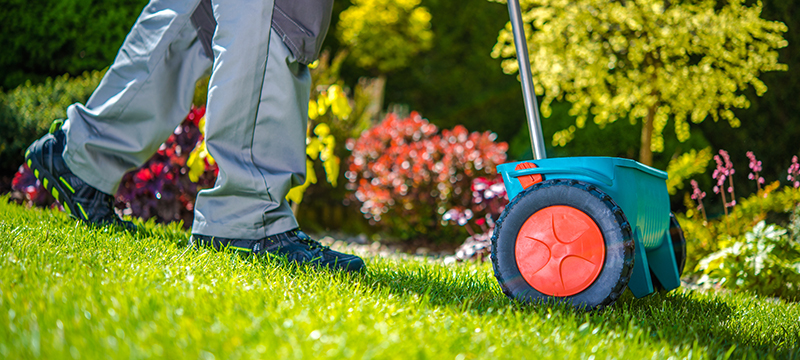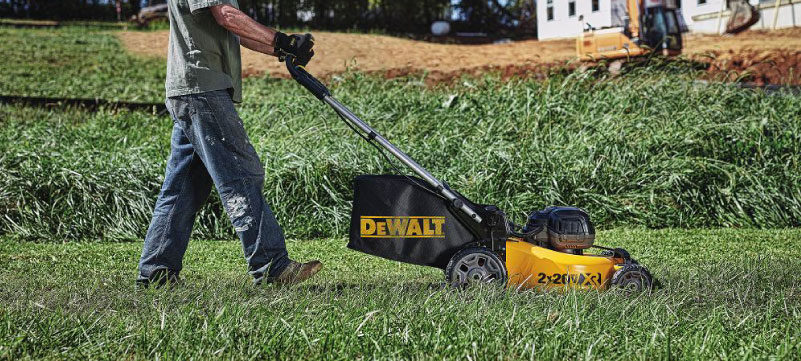It’s July, and you’re looking at your half yellow, half green grass full of crabgrass and other weeds, and you’re wondering how your neighbors have these lush, green lawns. There is a rather simple fix that will have you contending for the lawn of the month in no time, overseeding.
Overseeding is one of those things you didn’t know you needed until you discovered how to do it. It involves adding grass seed to a lawn without uprooting any topsoil, and you only need a handful of tools you probably already own, fertilizer, and grass seed. Our guide to how to overseed your lawn will walk you through the steps to creating a beautiful, full lawn in time for the summer season.
Mow and Rake the Lawn
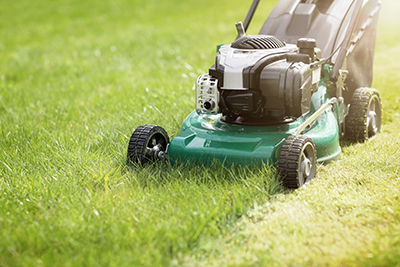
- Begin by mowing your lawn shorter than usual so it’s easier for grass seed to reach the soil. This creates a shorter distance between the soil and the top of your lawn so the seed can settle below existing grass.
- Rake the lawn using a tine or scarifier rake to remove dead grass and thatch from the lawn. This clears any barrier between new seed and the soil and lightly loosens the soil.
Test and Amend the Soil

Soil amendments are similar to fertilizer, but they have specific nutrients that can focus better on a specific deficiency.
- Test the soil of your lawn to ensure it’s at the proper pH level. If the soil is at a neutral pH level, amendments probably aren’t needed.
- Lime can raise the pH level of acidic soil, while sulfur amendments can add acidity to alkaline soil. Other additions such as peat moss or compost can improve the nutrient levels of clay and sandy soils, respectively.
Spread the Grass Seed

Choosing the correct grass seed for your region’s climate and spreading it properly are important factors.
- Cool-season grasses thrive in areas with mild summers and very cold winters and require more moisture.
- Warm-season grasses are best suited for areas with intensely hot summers and mild winters and require less moisture.
- Use a walk-behind or hand spreader to lay the seed down according to the seed’s packaging, as it will create an even distribution across your entire lawn. Seed can also be spread by hand, but it’s more difficult.
Add Fertilizer
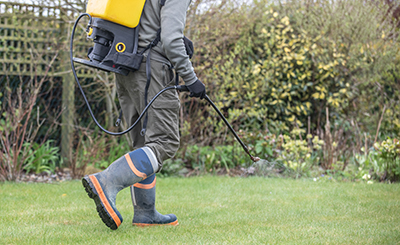
- Based on the soil test earlier, choose a fertilizer that best suits the deficiencies your lawn is currently facing.
- Fertilizers contain nitrogen, potassium, and phosphorus, so check the NPK value on the packaging to find the best one for you.
- Use a spreader to apply the fertilizer based on the recommendations on the packaging or use liquid fertilizer.
Water the Lawn
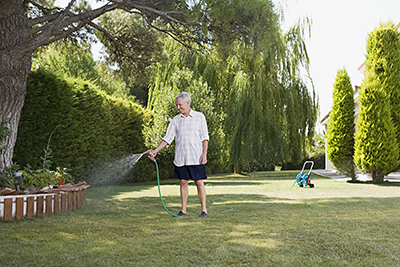
There are a handful of tricks to watering your new seed correctly.
- Water infrequently but deep each day with either a timed sprinkler or by hand.
- Water in the morning so it doesn’t evaporate due to the heat common during the afternoon.
- You don’t want to overwater either, as you risk washing away the new seed or preventing germination. Overwatering also can lead to thatch development or fungal and weed growth. If the ground feels soft or you see puddles forming, cut back on the length of watering.
- Don’t mow the lawn until it reaches 1 to 2 inches in height.

